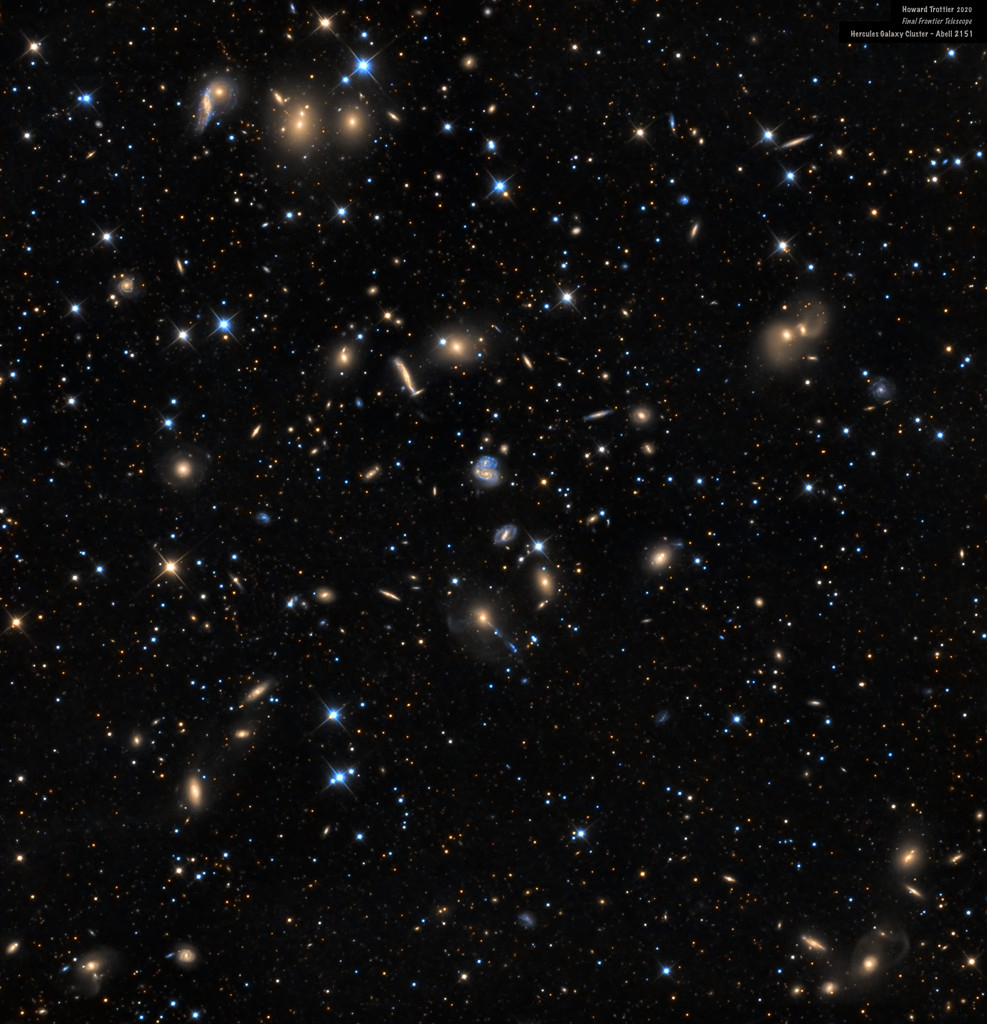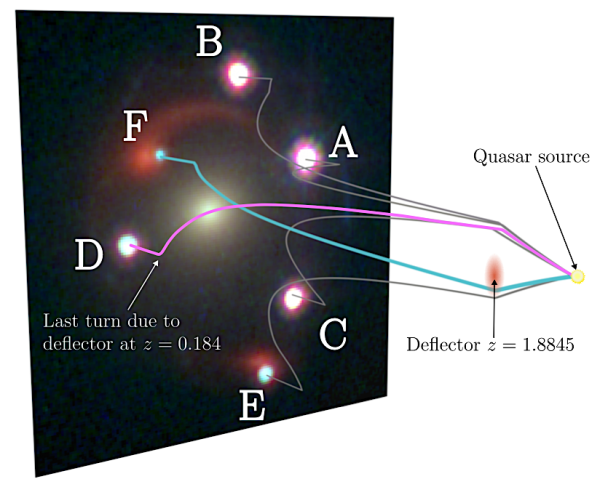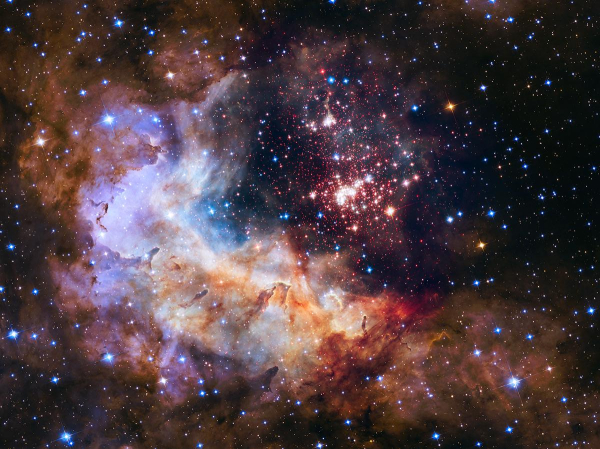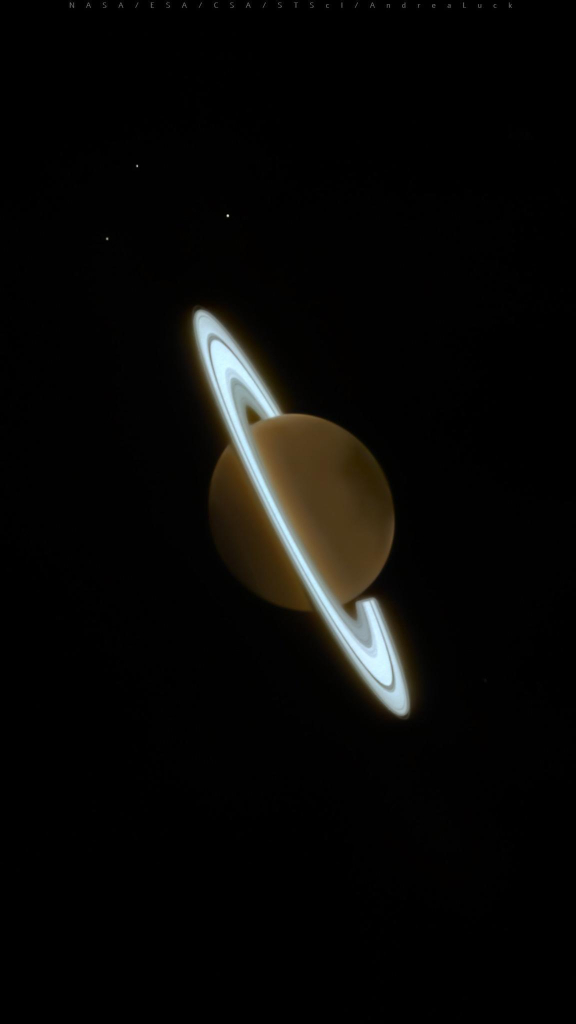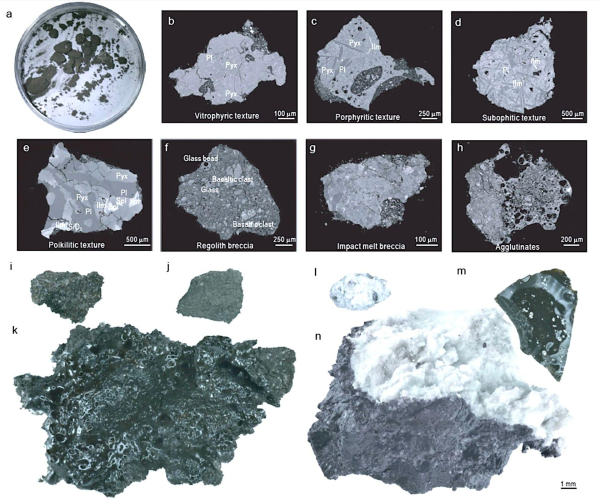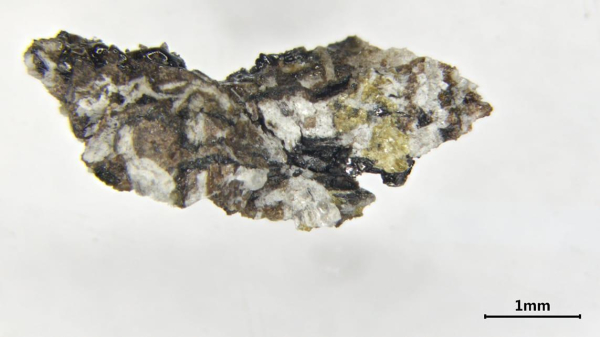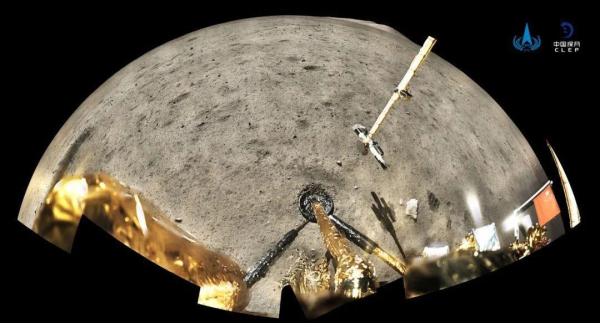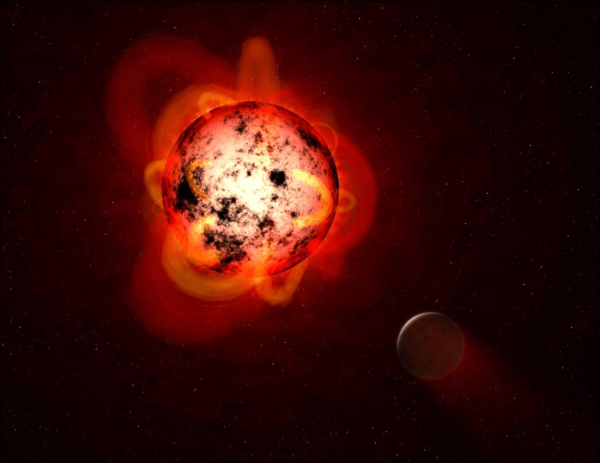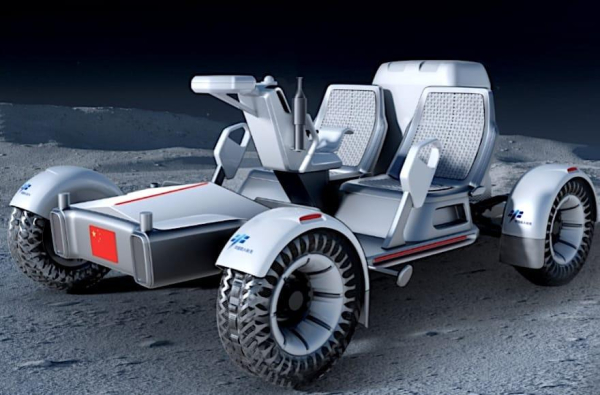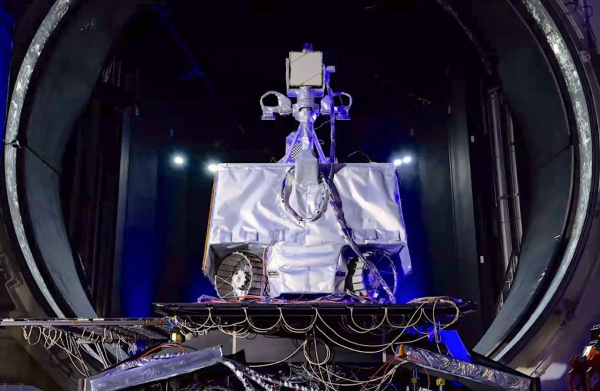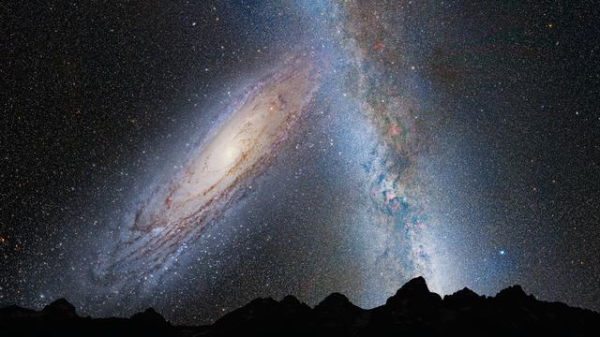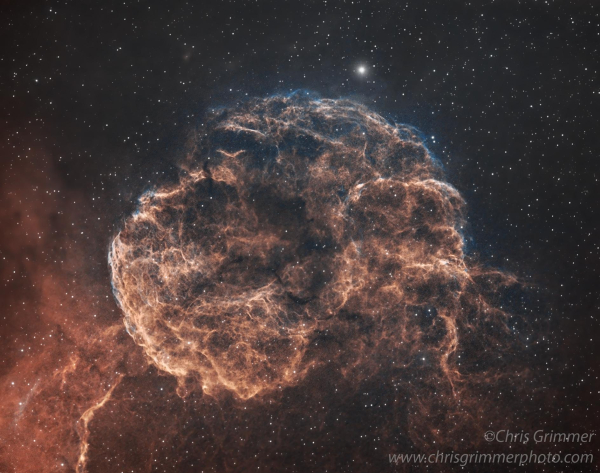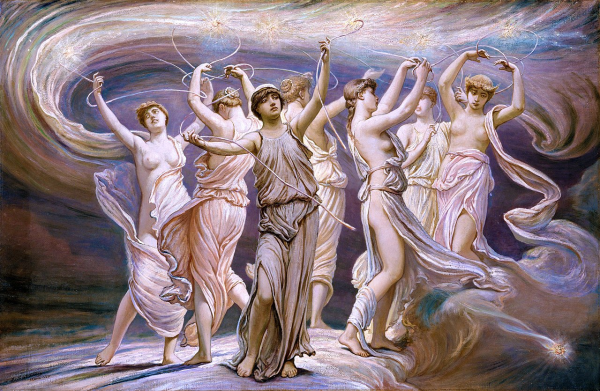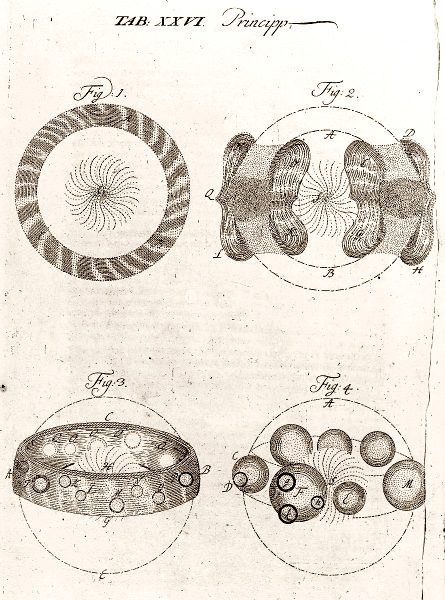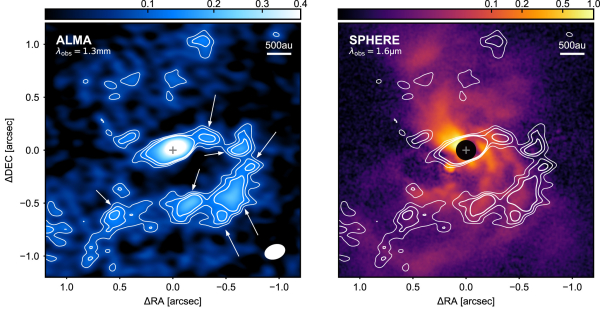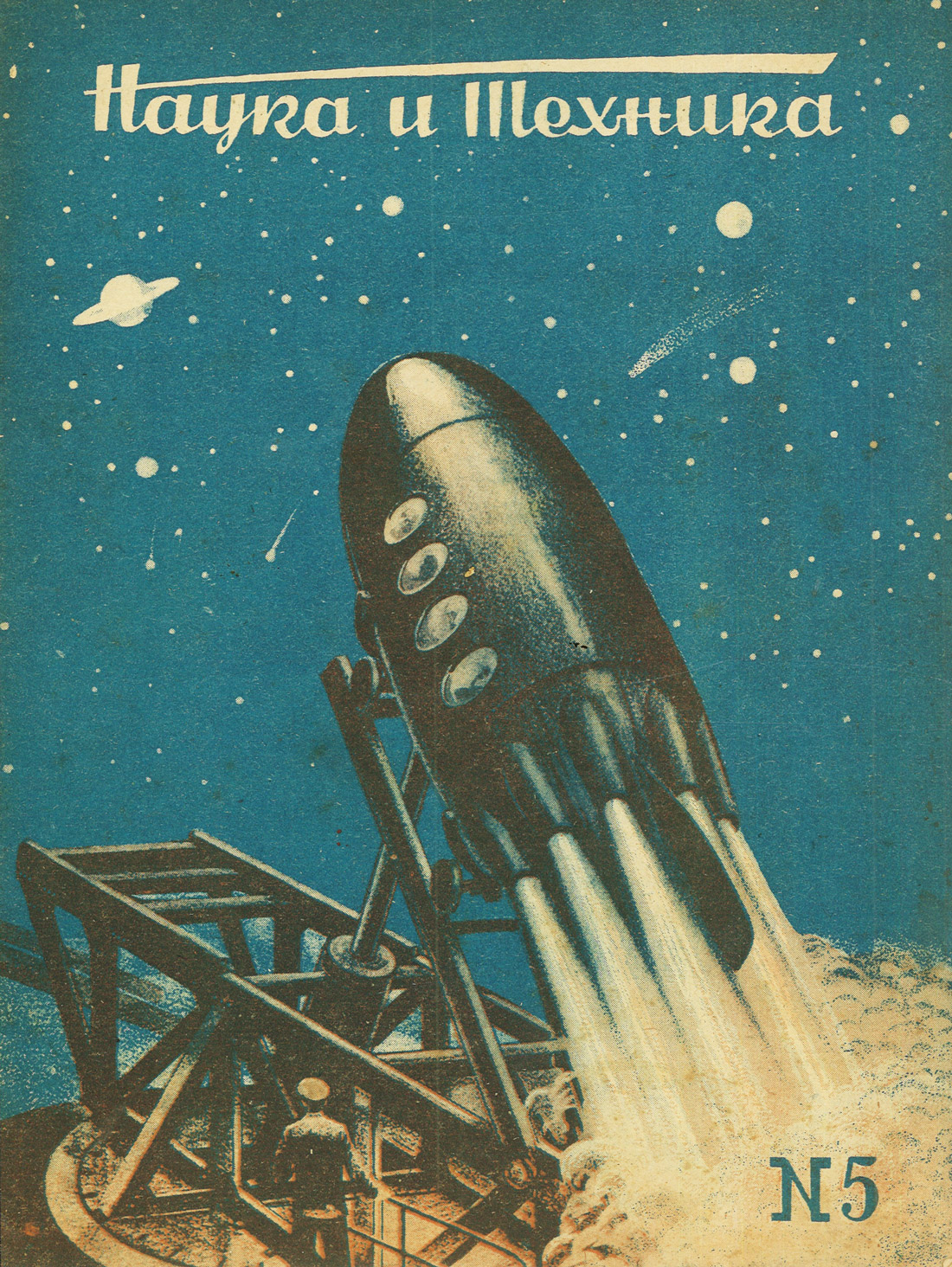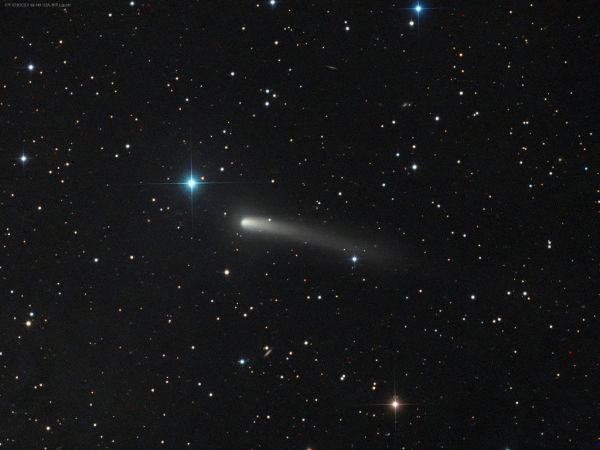Suche
Beiträge, die mit Space getaggt sind
Due to a rare, lucky cosmic alignment, the combined gravity of two galaxies bent light like spaghetti & split a distant quasar into six different images.
This six-part image could allow a very accurate measure of the expansion of the universe.
https://www.science.org/content/article/first-known-double-gravitational-lens-could-shed-light-universe-s-expansion #science #space #astronomy #physics
Westerlund 2 is a giant cluster of about 3,000 stars located 20,000 light-years away from Earth in the constellation Carina. These stars sculpt the surrounding nebula, carving out a cavity lined with a fantasy landscape of pillars, ridges, and valleys. The pillars, composed of dense gas and dust, are incubators for new stars. They are a few light-years tall and point to the central star cluster.
1/3
📷 https://hubblesite.org/contents/media/images/2015/12/3519-Image.html?news=true
#space #astronomy #Hubble #TimelineCleanse
#space #science #scicomm #wallpaperwednesday
#space #blog
Moon Monday #201: Scientists can now study exotic Chang’e 6 lunar samples
Plus: New round of Chang’e 5 sample studies, gifting part of the Moon, and Sino-US cooperationJatan Mehta (Jatan’s Space)
#space #blog
Reading menu: Weird cosmic worlds
A neutron star is like a huge atomic nucleus held together by gravity rather than the strong nuclear force. But we don’t fully understand how neutrons interact at extreme temperatures and densities.Jatan Mehta (Jatan’s Space)
If you are thinking of or have made such a channel I'm happy to share it here.
I watch a few on #YouTube but would like to use #PeerTube more. Channels like: #YDAW, #FascinatingHorror, #KurgesagtInANutshell.
#space #blog
Moon Monday #200: Thank you, a crewed Chinese rover, Artemis updates, and more
Welcome to the 200th edition of my Moon Monday blog+newsletter! 🚀🌗 I’d like to take this moment to highlight four things working on Moon Monday has enabled: 1.Jatan Mehta (Jatan’s Space)
It’s Always Monday On The Moon
~ #Dgar
https://song.link/i/1570437239
#DgarMusic #Indie #Space #Rock #Music
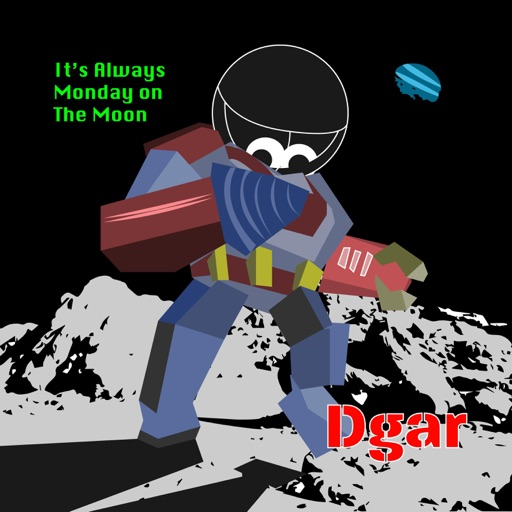
It's Always Monday On the Moon by Dgar
Listen now on your favorite streaming service. Powered by Songlink/Odesli, an on-demand, customizable smart link service to help you share songs, albums, podcasts and more.Songlink/Odesli
https://hackaday.com/2024/10/31/voyager-1-fault-forces-switch-to-s-band/ #space
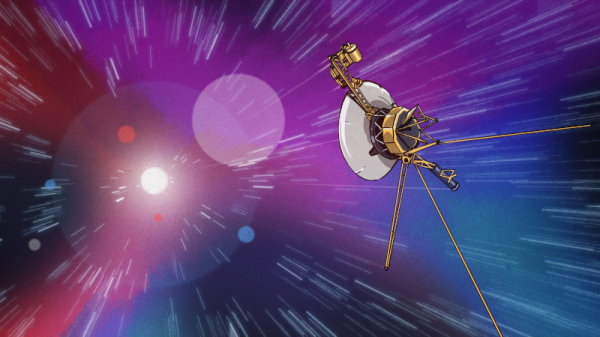
Voyager 1 Fault Forces Switch To S-Band
We hate to admit it, but whenever we see an article about either Voyager spacecraft, our thoughts immediately turn to worst-case scenarios. One of these days, we’ll be forced to write obituar…Hackaday
📷 :https://images.nasa.gov/details/GSFC_20171208_Archive_e001738
#Astronomy #Space #Science #Astrophotography #AstroDon #MilkyWay #Andromeda #Galaxy #NASA
NASA Image and Video Library
NASA Image and Video Library, serving up consolidated imagery and videos in one searchable location. Users can download content in multiple sizes and resolutions and see the metadata associated with images, including EXIF/camera data on many images.NASA Image and Video Library
Shout out to the 7 Sisters known as the #Pleaides who live now as stars in the night sky b/c #Orion is the WORRRSST!
We did an episode about the #astronomy & #myth of this #asterism earlier this season

#Myth #Mythology #GreekMythology #Space #podcast #NationalSisterDay #Sister
🎨 https://en.wikipedia.org/wiki/Pleiades_(Greek_mythology)#/media/File:The_Pleiades_(Elihu_Vedder).jpg
this is not a scene from a movie
this is simply a one in a billion video shot at the right time at the right angle by a teenager in #portugal a few days ago, may 18/ 19
fucking amazing! positively biblical
#space #meteor
experts say it was a #comet fragment, a few feet wide
https://www.news.com.au/technology/science/space/blue-meteor-falls-through-the-sky-over-spain-and-portugal/news-story/7bd39d794d6a5e79feade5723e4d4787
It originated with Swedish philosopher Emanuel Swedenborg, way back in 1734. But only now can astronomers directly observe that, yes, planets really do form in clouds around newborn stars. Science takes time.
https://blogs.futura-sciences.com/e-luminet/2016/09/28/cosmogenesis-8-the-nebular-hypothesis/ #science #space #astronomy #nature
Cosmogenesis (8) : The Nebular Hypothesis, by Jean-Pierre Luminet
Sequel of the preceding post Cosmogenesis (7) : The Date of the Creation The Nebular Hypothesis The ancient Babylonians had a different idea of how the world began. They believed that it had evolved rather than being created instantaneously.Jean-Pierre LUMINET (e-LUMINESCIENCES: the blog of Jean-Pierre Luminet)
Each of the arrow-marked blobs is a likely planet-in-the-making around the infant star FU Orionis (great name), located 1,350 light years away in the constellation Orion.
https://arxiv.org/abs/2404.05797 #space #science #astronomy #astrodon
Direct imaging of exoplanets
Over the past 4 decades, the exploration of planets beyond our solar system has yielded the discovery of over 5600 exoplanets orbiting different stars.arXiv.org
Savage noted the engineering differences between the two. The Apollo suit was a bit complicated, requiring separate pieces of the suit to be put together before a backpack could be attached. The Krechet had a one-piece hardbody interior that could only be entered via backpack, a design that NASA is currently using in their Artemis space suits.

#USA #USSR #space #cosmos #engineering #history
The Engineering Differences Between US and Soviet Spacesuits From the 1960s
While visiting the National Air and Space Museum, Adam Savage examined David Scott's Apollo 15 A7LB and a Russian Krechet moon suitLori Dorn (Laughing Squid)
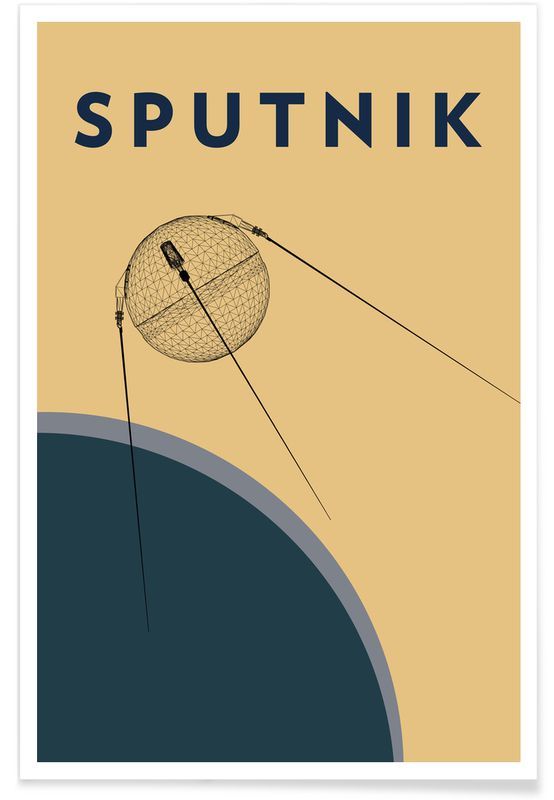
Sputnik 04.10.1957 The First Artificial Earth Satellite.
Spacecraft PS-1 (the simplest satellite-1) was a ball with a diameter of 58 centimeters, weighed 83.6 kilograms, was equipped with four pin antennas with lengths of 2.4 and 2.9 meters to transmit signals from battery-powered transmitters.
#history #sputnik #space #cosmos #anniversary
Book:
How I Killed Pluto and Why It Had It Coming, by Mike Brown
If you are in my generation, Pluto losing its spot as a planet is likely a sore topic for you. I was therefore delighted to find this book, and learn more about just what the heck happened and why. By the end of the book I was not only stunned by the amount of work that went into the process, but I also learned to understand why Pluto is not a planet anymore.
#astronomy #planets #science #space #Pluto
Life seems to have been found. But not where they were looking
It is unlikely that it will be possible to explore even the nearest exoplanets with the help of automatic spacecraft in the current century. It is quite possible, however, that the answer will be found very close, on our closest neighbor in the solar system - on Venus. The surface temperature of the planet (735 K, or 462°C) and the enormous pressure (87–90 atm) of its gas envelope with a density of 65 kg/m3, consisting mainly of carbon dioxide (96.5%), nitrogen (3.5%), and traces of oxygen (less than 2·10–5%), are close to the physical conditions on many exoplanets of a special class.

Recently, television images (panoramas) of the surface of Venus, obtained thirty years ago or more, have been re-examined and processed. They found several objects ranging in size from a decimeter to half a meter, which changed shape, position in the frame, appeared in some images and disappeared in others. And on a number of panoramas, precipitation was clearly observed, which fell and melted on the surface of the planet.
...
#science #cosmos #space #venus #life #history #USSR
Жизнь, кажется, нашли. Но не там, где искали
Следуя некоторым видам поиска, мы смогли бы обнаружить жизнь, базирующуюся на совершенно ином химическом составе (без углерода и/или воды).www.nkj.ru
My neighbor growing up worked on it - we got to see close-up pictures of the moon before anybody!
#space
